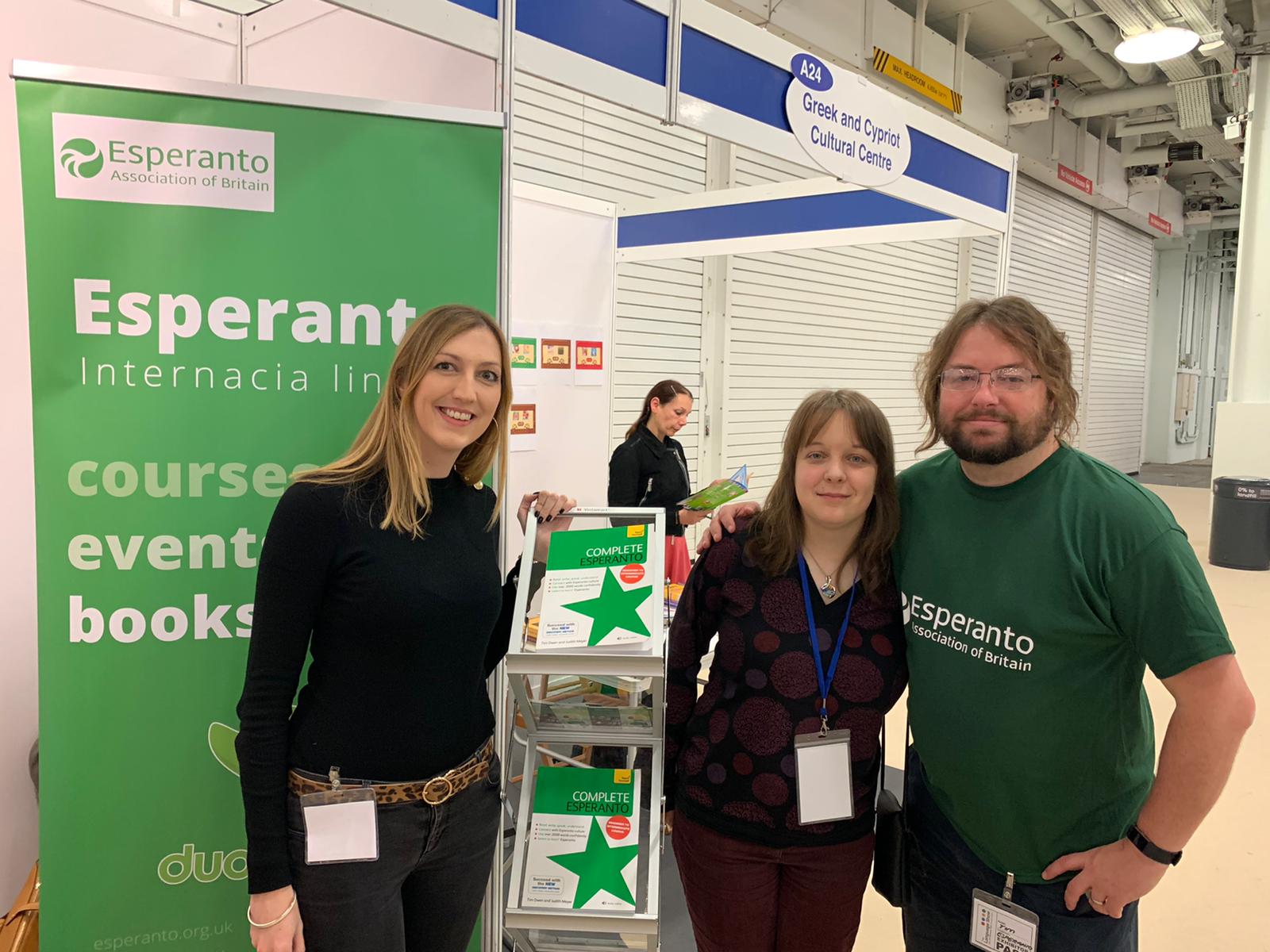I first read about Esperanto when I was 13, in a popular science book on linguistics with the catchy title “Did the Neanderthal men speak English?” (in German). One of the chapters of the book was dedicated to the history of auxlangs, that is, languages created to help international communication. The book mentioned that Esperanto
– is the only such language with even a modicum of success (spoken by several million people today)
– provides a solid foundation for learning other languages later
– can be learned at a fraction of the effort
Since my goal at that age was to learn all the languages in the world, it made sense to start with the easiest, which, even if it wasn’t particularly useful, would help me pick up other languages much more quickly.
At 13 it was hard to find materials for learning Esperanto, but at 14 I found a free online course with an e-mail tutor to correct my exercises. That is how I learned the language, largely in self-study. Seeing that learning a language could be easy and fun was a huge boost of confidence, which enabled me to envision learning other languages in self-study – I started learning Chinese and other languages not too long after I reached fluency in Esperanto.
I started to talk to people from around the world. Learning English had put me into contact with a group of people from the USA, Canada, the UK and Ireland. Through Esperanto, I began to chat with people from Russia, Japan, Brazil, Ghana and Iran. This greatly changed my world view.
It was through Esperanto that I met my boyfriend of many years, an American who was visiting Germany and who found me in Pasporta Servo, an offline hospitality network for Esperanto speakers, which had been around long before Couchsurfing etc. copied the idea.
It’s also because of Esperanto that I started traveling a lot, and visited places that are not classic holiday destinations. Through Esperanto, I traveled
* Twice to the Czech Republic (once to attend a seminar on SEO and web technologies taught in Esperanto)
* Twice to Poland (once meeting Nobel Peace Prize winner Lech Walesa, who came to talk with our widely international group about our visions for Europe)
* Once each to Sweden, Lithuania, Spain, Ukraine, Belgium, France
* I also traveled to China to represent the World Esperanto Youth Organisation at a conference on EU-Chinese dialog between youth organisations on the use of social media.
Most of these trips were paid by Esperanto organisations or by the EU.
I also got four jobs through Esperanto, unrelated to the trips:
1. Developing a Drupal site about Esperanto
2. Developing a social network unrelated to Esperanto because I met the investor at an Esperanto event
3. Developing a machine translation system using Esperanto as interlingua
4. Co-authoring the new edition of Teach Yourself Complete Esperanto, together with Tim Owen (guy to my right in the image above)
If you ask me whether it makes sense to learn Esperanto for economic reasons, I’d still say no, but I personally can’t complain 😉
I’m a geek, so I particularly enjoy Esperanto meet-ups as a way to meet other people who are interested in languages, science, technology or politics and to get new ideas for projects. There’s an event I usually go to which lasts 7 days around New Year’s, and where I can meet 200-300 people, most of 20-35 years old, representing 25+ countries, all of who enjoy meaningful conversations. There are concerts and movies, too, drinking and dancing, but the group pressure is off, there’s a quiet candlelit room for tea drinking, too, and those who had enough vodka may find themselves wandering into that one for the rest of the night. The meet-ups are participant-led: anyone can stage sessions (lectures, workshops, discussion groups) on anything at all, so it’s a week full of getting introductions to diverse things from Hungarian language to hand massage to data compression to capoeira. I once noticed someone was giving a lecture on Schroedinger’s cat at 1am, with several dozen people listening. Only in the world of Esperanto.
Tl;dr: Esperanto is liberating and its influence is pervasive in my life: most of my free-time activities and holidays are very different from what they were before and occasionally Esperanto enters my work life or projects as well.
Are you curious about Esperanto now? Of course I’ll recommend you buy the course I myself wrote (buy it from BookDepository with free worldwide shipping and don’t support Jeff Bezos), but if you’re not ready to make an investment yet, the Duolingo Esperanto course is free and good enough to get a first impression of the language.


